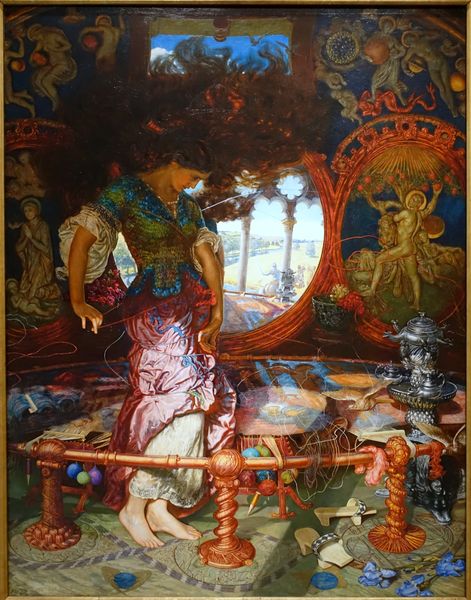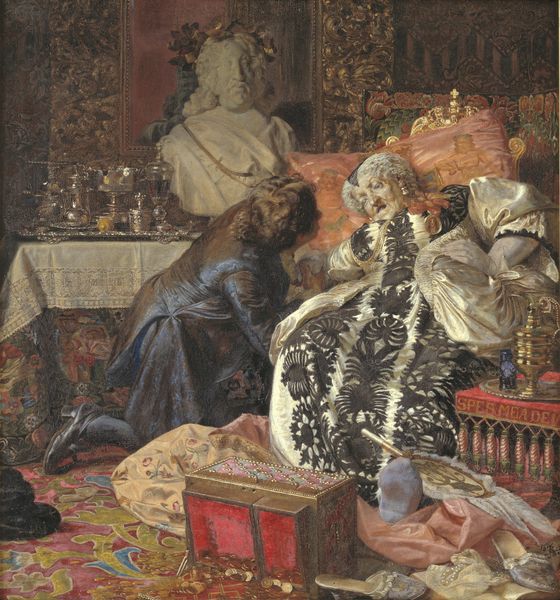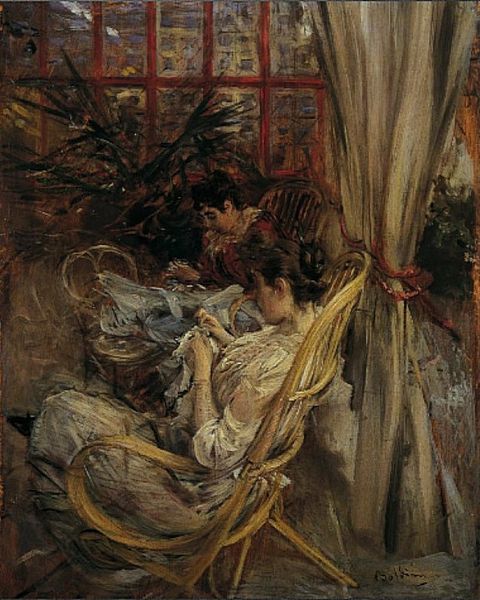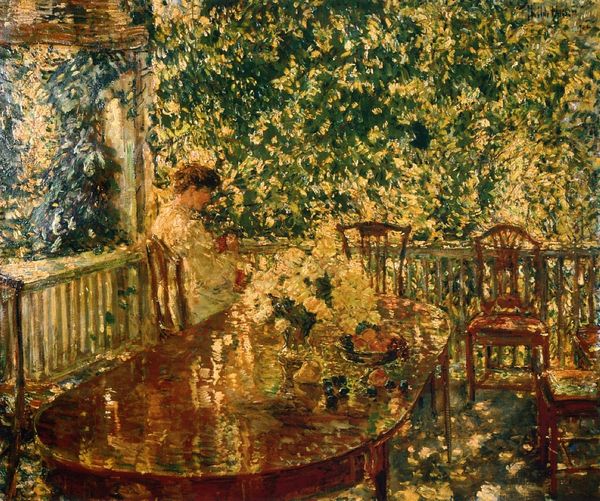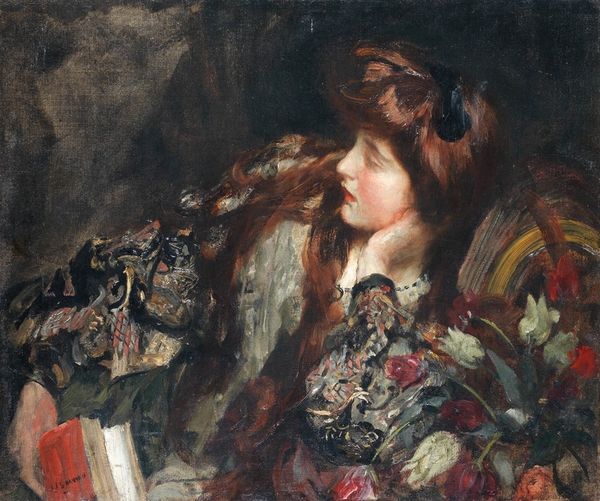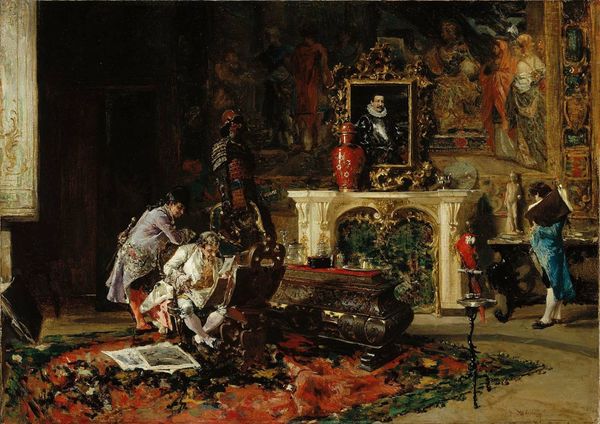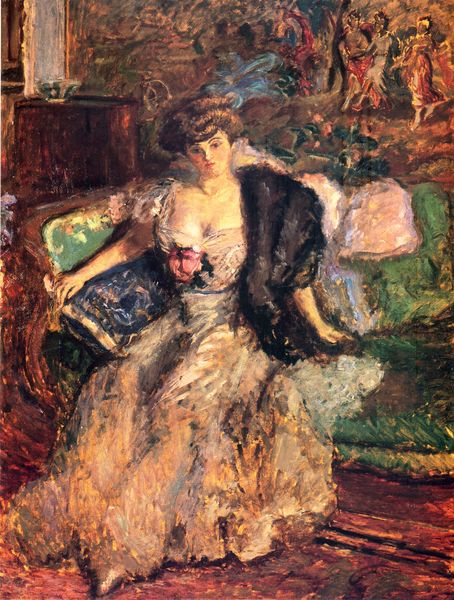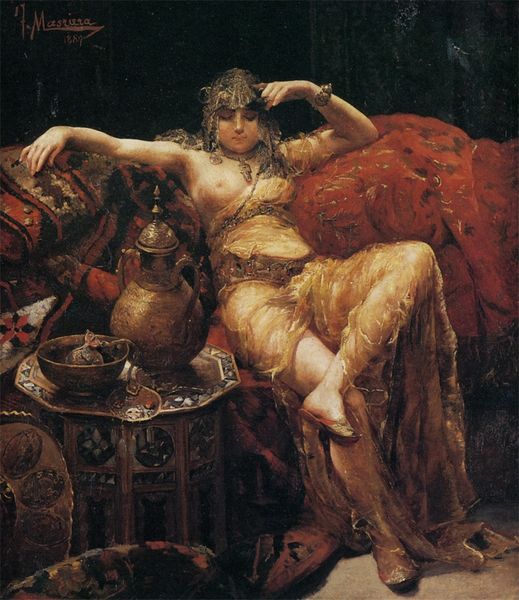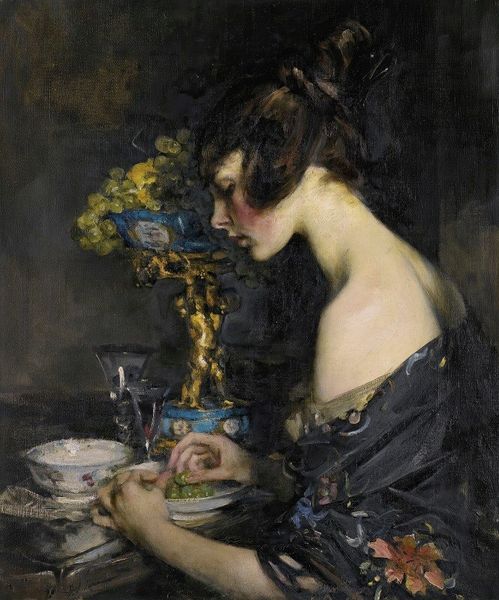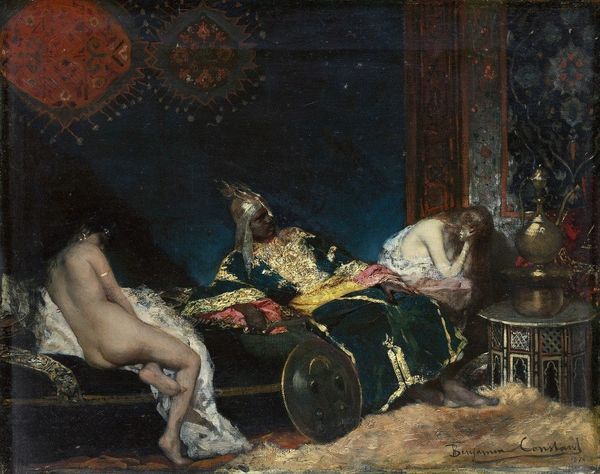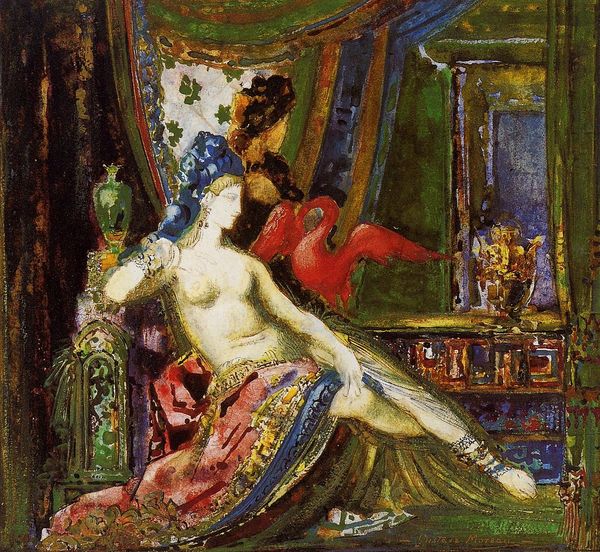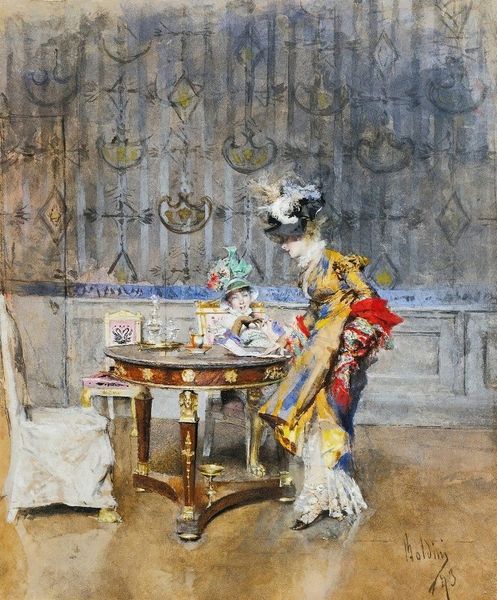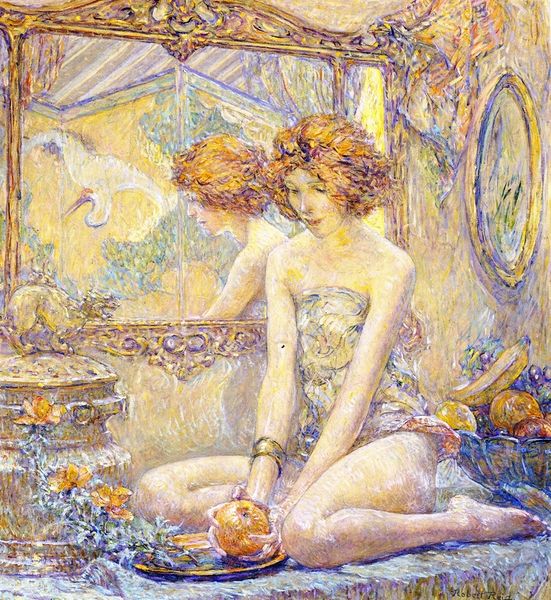
painting, oil-paint, textile
#
portrait
#
fairy-painting
#
narrative-art
#
painting
#
oil-paint
#
landscape
#
textile
#
figuration
#
pre-raphaelites
#
lady
Copyright: Public domain
Curator: This painting, “The Lady of Shalott,” was completed in 1905 by William Holman Hunt. Editor: Oh, there’s a tragic beauty, a haunting quality, in this piece. She is standing, the loom looms... about to step off, to meet her doom! It has this gorgeous Pre-Raphaelite detail, but it makes me feel rather claustrophobic. Curator: Claustrophobic? Why do you say that? Editor: Look at the busyness around her, the figures painted on the walls; everything, from the details on the loom to her cascading hair, suggests a mind overloaded, suffocating with information and detail. She's been weaving all that time, right? A prisoner in this creative act. Curator: Exactly. Hunt really emphasizes the psychological impact of the curse on the Lady, which forbade her to look directly at the outside world. She could only see it reflected in her mirror. The reflections behind her capture snippets of Camelot. Note also, that the artist has represented various literary characters in these reflective areas of the painting, each contributing to a richer narrative! Editor: Those small, almost dreamlike vignettes within the larger image speak of layers, levels of understanding—but I do wonder, isn’t it almost overly literal? She has stepped off her creative throne for something so ordinary. It seems like the reality she has dreamed about for so long falls short. She’s still beautiful, yet resigned, sad; is the painting actually more sad than pretty? Curator: It's a powerful moment that the artist presents. This weaving became her shield. Once broken the only solution appears death. And what can we say of the death in the raft. Hunt also emphasizes the tapestry; its physical presence symbolizes her art, but equally important it acts as the only "story" we will have of her! She's trapped between creativity and freedom. I can't get enough. Editor: So, in a way, this Pre-Raphaelite masterpiece shows us both the prison of the mind, or tradition, and the tantalizing allure, and ultimate failure, of unfiltered experience. What could have been achieved had there been balance... I want to know if she knew what was going to happen as she stepped away. That face reveals little! Curator: Yes. Perhaps therein resides her truest tragedy? We'll never really know.
Comments
No comments
Be the first to comment and join the conversation on the ultimate creative platform.
